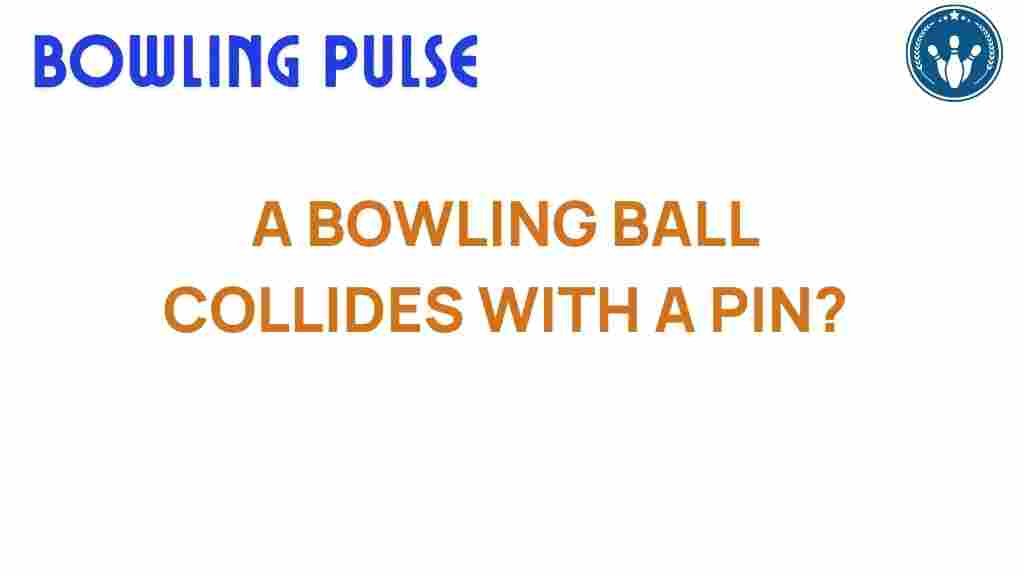The Science Behind Bowling: What Happens When a Ball Hits a Pin?
Bowling is not just a fun pastime; it is a fascinating combination of skill, technique, and physics. Understanding the physics of bowling can enhance your game and help you achieve those coveted strikes. In this article, we will delve deep into the science behind bowling, exploring the mechanics of how a ball interacts with pins, the equipment used, various bowling techniques, and tips for improving your score.
Understanding the Physics of Bowling
At its core, bowling is a classic example of physics in action. When a bowler rolls a ball down the lane, several physical principles come into play:
- Force: The bowler applies force to the ball, which determines how fast and how far it will travel.
- Friction: The interaction between the ball and the lane surface affects the ball’s speed and rotation.
- Momentum: Once the ball is in motion, it carries momentum that helps it knock down the pins.
- Impact: The collision between the ball and the pins is where the magic happens.
When a bowling ball strikes a pin, the energy from the ball is transferred to the pin, causing it to move. The angle and speed of this impact determine how well the pins interact with each other, which we refer to as pin action.
The Role of Bowling Equipment
To fully understand the science behind bowling, we must consider the bowling equipment involved. The type of ball, the surface of the lane, and even the shoes can significantly influence the outcome of a game.
Bowling Balls
Bowling balls come in various weights and materials. The typical weight range is between 6 to 16 pounds. The density and surface texture of the ball affect its performance:
- Reactive Resin Balls: These provide more hook potential due to their surface texture, allowing for better grip on the lane.
- Urethane Balls: These offer a smoother roll with less friction, suitable for dry lanes.
- Plastic Balls: These are often used for beginners as they have less hook potential.
Bowling Shoes
Bowling shoes are designed with a slippery sole on one shoe (the slide shoe) and a grippy sole on the other (the braking shoe). This design allows for smooth sliding during the release of the ball, which is crucial for maintaining balance and accuracy.
Bowling Techniques for Strikes
Achieving a strike is the ultimate goal in bowling. Here are some effective bowling techniques that can help you improve your chances of hitting all ten pins:
- Stance: Begin with a balanced and relaxed stance. Your feet should be shoulder-width apart.
- Approach: Use a consistent approach pattern. The four-step approach is popular, where you take four steps before releasing the ball.
- Release: Focus on a smooth release. Your hand should remain behind the ball until the last moment to create spin.
- Aim: Use the arrows on the lane to help you aim your shot. Aim for the pocket, which is the space between the 1 and 3 pins for right-handers, and 1 and 2 pins for left-handers.
The Importance of Pin Action
Pin action refers to how effective the pins are at knocking each other down after being struck by the bowling ball. Here’s how to maximize pin action:
- Hit the Pocket: Hitting the pocket at the right angle will create a domino effect, leading to more pins falling down.
- Speed and Spin: The right combination of speed and spin will allow the ball to enter the pins at an optimal angle.
- Ball Weight: Heavier balls tend to knock down pins more effectively, but it’s essential to choose a weight you can handle comfortably.
Bowling Tips for Improvement
Here are some additional bowling tips that can help elevate your game:
- Practice Regularly: Consistent practice helps improve your muscle memory and comfort level with different techniques.
- Analyze Your Game: Use a bowling analysis tool or app to review your performance and identify areas for improvement.
- Watch Professionals: Observe professional bowlers to learn their techniques and strategies.
- Stay Relaxed: Tension can affect your performance, so remember to breathe and stay calm while bowling.
Troubleshooting Common Issues
Even seasoned bowlers face challenges. Here are some troubleshooting tips for common issues:
- Inconsistent Releases: Focus on your grip and follow-through. Ensure your hand is behind the ball at release.
- Ball Going Off Target: Check your stance and aim. Make adjustments to your approach if necessary.
- Lack of Pin Action: Ensure you’re hitting the pocket correctly. Experiment with different speeds and spin on the ball.
The Impact of Sports Science on Bowling
The integration of sports science into bowling has profound implications. Coaches and athletes use data analysis to improve performance, understanding how biomechanics and physics affect their game. By analyzing the motion of a bowler, it’s possible to identify optimal release points and angles that enhance striking power.
Technology, such as motion capture and advanced analytics, provides insights that can be applied directly to training regimens. By leveraging these tools, bowlers can fine-tune their techniques for better results on the lanes.
Conclusion
Bowling is a sport rich in science and technique. From understanding the physics of bowling to mastering bowling techniques and improving your pin action, there is much to explore in this captivating game. By focusing on your equipment, practicing regularly, and applying the tips and techniques discussed, you can significantly improve your bowling performance.
For more information on bowling techniques and tips, check out this resource here. If you’re curious about the latest advancements in bowling technology, take a look at this external link here. Remember, the key to mastering bowling lies in understanding the science behind it!
This article is in the category Techniques and created by BowlingPulse Team

1 thought on “The Science Behind Bowling: What Happens When a Ball Hits a Pin?”